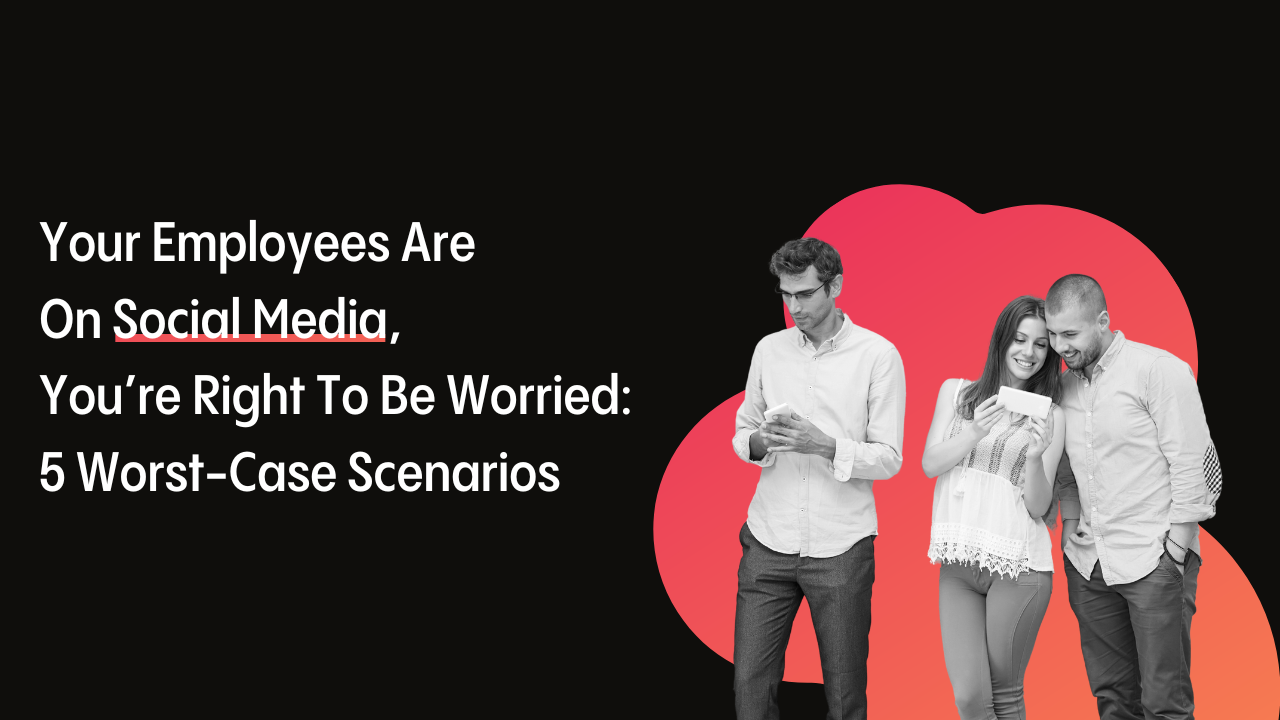A high-level employee posts inappropriately on their personal social media.
Estée Lauder firing a senior executive for an offensive Instagram post and the Food Network disavowing a host after controversial tweets are just two examples of a mounting list of incidents that underscore the increasing risk corporations face in having high-profile or executive team members out in the digital arena. Given their higher visibility, stories of their slip-ups are far more likely to generate attention. And if an incident goes public, it can affect brand perception across critical audiences including global clients, members of the board and other governing parties. Meanwhile, a critical all-too-often overlooked liability is LinkedIn: Every action a high-level employee takes, whether posting about their personal life or simply engaging with a post is inextricably tied to and representative of their employer’s brand.
An employee and a customer start following each other on Instagram.
You attend a conference to meet up with a client. Afterward, your client posts a photo from dinner and asks to tag you. You share your Instagram handle and start following each other on the app. It’s not like you need to ask your boss, after all it’s your own personal, private social media account, right?
For employers, the implications that come with this new and common workplace dynamic are enormous. Consider that with a few simple taps on their phone, whoever is representing the brand at a client level now has direct, personal exposure to the most valuable people for the business. Brands put tremendous resources into creating consistency in their brand voice and external messaging. Yet now they have hundreds or thousands of employees—who may not yet have read company brand guidelines—directly interfacing with the public and clients, unchecked.
An employee’s past private social media activities suddenly resurface.
The U.S. government’s Special Operations unit made headlines last year when it reassigned its new head of diversity and inclusion for putting divisive content on his personal social media—then reinstated him just a few months later. Richard Torres-Estrada had shared polarizing content on his Facebook profile, such as a post comparing Donald Trump to Hitler. Upon being alerted, Special Operations investigated the matter and concluded that since the postings had been made prior to Torres-Estrada stepping into the new role, he could remain in it. This example underscores the complex new challenges that even the biggest government organizations need to figure out to best avoid undesirable fallouts.
Across every single organization out there right now lurk countless such business land mines. As younger generations of digital natives enter the workplace, the threat only rises exponentially. Savvy leaders can proactively get ahead of the problem by having conversations internally on the topic, determining the unique risks of the organization and developing a social media policy—or updating existing ones. The good news is that having any type of foundation or groundwork in place can help smooth the path for future technology.
As people around the world increasingly adopt social media, the companies that employ them are facing a whole new slew of related PR and HR mishaps. Yet, most of them are not taking the urgent actions needed to prevent them.
Part of the reason they aren’t is simply a lack of general awareness because businesses are inclined to bury negative incidents when they happen. This means the occasional cautionary tales we see in the media (e.g., “Employee fired for racist tweets”) represent only the very tip of the iceberg of what is actually happening. I’m certain of it, because I have the unfortunate inside scoop: As the CEO of a social technology company working to find a solution, I regularly meet with top executives from some of the largest brands around the world, and many have confided in me that they are already experiencing the fallout from employees on social media.
Here are some common issues we’re seeing.
An employee’s personal social media content goes viral.
Sherwin-Williams was recently hit with public backlash for firing a part-time employee who went viral on TikTok for his paint-mixing videos. The paint company’s reasoning was “gross misconduct,” although the worker had self-purchased the company products he used in his videos. After the TikToker shared a video talking about his termination, fans lashed out at Sherwin-Williams for being out of touch, insensitive and missing out on a great marketing opportunity by parting with a passionate employee instead of partnering with him.
Meanwhile, Apple is receiving its own unwanted publicity for a similar situation after an employee—who arguably did not actually breach the internal social media policy of her big tech employer—shared some security tips to a fellow TikToker who’d lost her iPhone. If the world’s largest company is not immune to this type of fallout, you can imagine how prevalent the risk is for all others.
An employee follows a direct report on social media who feels uncomfortable but pressured to accept.
This is just one example of the uncomfortable, complex and particularly tough-to-navigate dynamics that are emerging in the business world, as personal and professional lives become blurred with the increasing ubiquity of social media. There are countless cringeworthy scenarios out there: A male employee follows and messages female colleagues during off-hours; a supervisor appears to befriend on social media only certain favored members of their teams, etc. When employees start to follow each other on social media, how do companies set guidelines to best prevent HR issues? At the same time, how do they not take policing too far? For the majority of businesses, these critical matters remain worryingly unanswered and overlooked.
